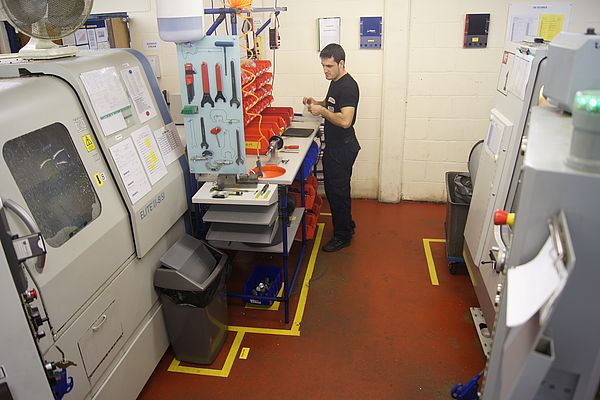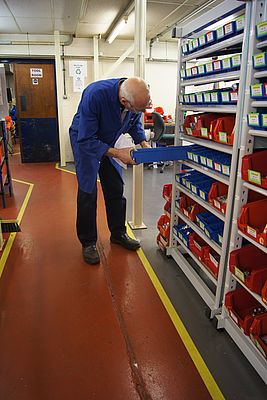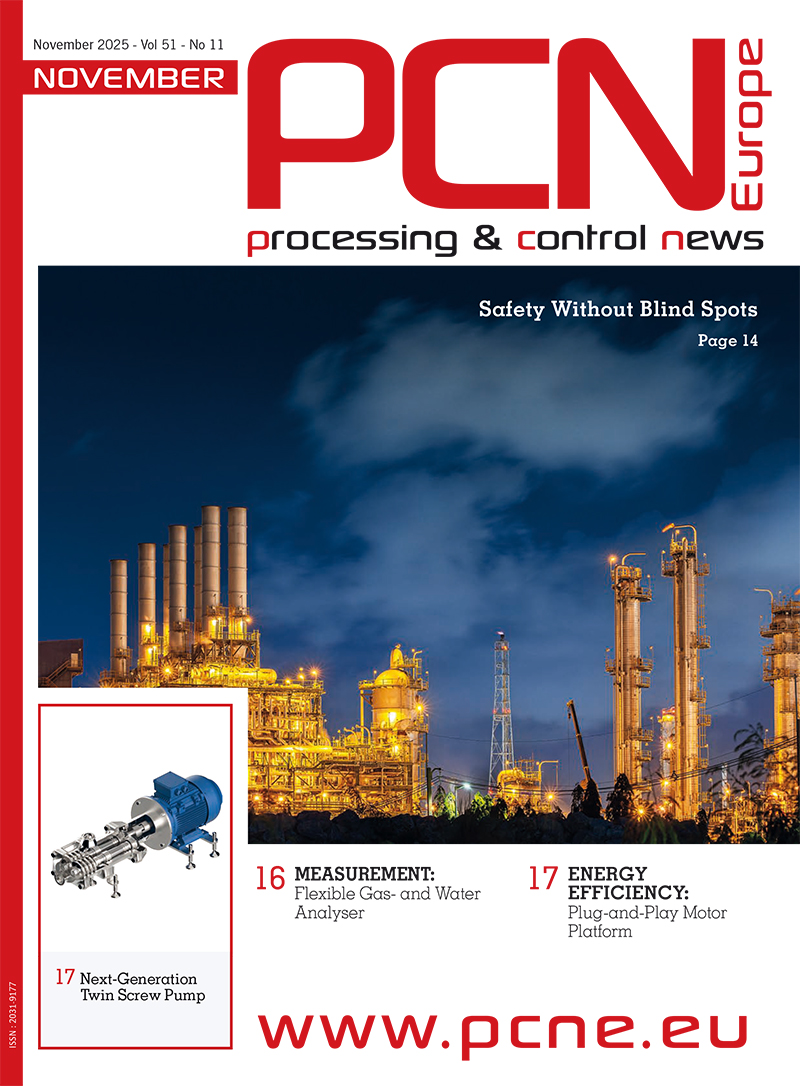In the decades since Toyota emerged as one of the world's leading manufacturing organisations, there has been growing interest in the approach it pioneered. Lean principles, the basis of the Toyota production system, are sometimes - incorrectly - seen as a way of organising manufacturing operations. In fact, lean is much more fundamental, applicable to any process within a business, from the back office to the factory floor.
At its heart, lean is about applying standards to business processes, to ensure the customer receives what they want, consistently, first time, every time. By continually examining, experimenting and improving those standard processes, lean companies eliminate waste, reduce errors and increase their ability to respond to customer demand. Organisations don't develop those capabilities overnight, however. Lean is a journey, involving deep and far reaching culture change.
At Huco a leading manufacturer of precision couplings, the journey to lean began in earnest a decade ago, when it became part of Altra Industrial Motion, a leading global supplier of power transmission components. Over many years, Altra has developed and refined its own approach - the Altra Business System - adapting proven lean principles to the specific needs of the two dozen companies in its portfolio.
The first steps of that journey were taken in Huco's manufacturing operations, explains Operations Director Liam Noone. "Changing long-established processes and culture isn't easy, and it isn't something you can do sitting behind a desk. It is essential that everyone involved can see, feel and experience the benefits of the lean approach at first hand," he says. "We had to take a 'go and see' approach, spending time talking to our operators, asking them about the problems and challenges they faced every day. Then we looked at how lean principles could address those issues."
Some of the most important activities in lean are deceptively simple. Take the 5S approach for example: sort, set, shine, standardise, sustain. 5S is much more than workplace housekeeping. A properly organised workplace enables operators to do their jobs effectively, without wasting time searching for tools or materials, or working around obstructions. Even more importantly, organisation brings clarity, allowing everyone to see problems and improvement opportunities.
At Huco, acceptance of the potential of lean came early, says Noone "We set up a model of good practice in one area of our Hertford plant, establishing a cellular approach to manufacturing, removing excess inventory and streamlining operations. The advantages of the new approach were so obvious to everyone in the plant that there was immediate appetite to adopt it elsewhere."
Today, the company's manufacturing operations have been transformed. It has established dedicated production cells for each product group. The majority of products flow through manufacturing processes one by one, rather than in batches. Production teams run those operations using standardised processes, with team leaders trained in problem solving and improvement techniques. Management boards at each cell record problems and improvement opportunities, and the company uses Pareto analysis to focus its on-going improvement efforts on the most important issues first.
"These changes have produced significant productivity improvements," says Noone, "Allowing operators from some lines to be reallocated to other activities and easing the challenge of finding new, skilled production personnel as older members of staff retire."
For Huco's customers, the impact of the change has been highly significant too. Lead times have fallen from more than four weeks to less than two days. Quality levels have risen dramatically and on-time, in full delivery performance is now higher than 97 percent. In some product lines customers can now order in any quantity they want, with guaranteed delivery within three days.
Customers have seized that opportunity, says Noone, changing their purchasing habits to order smaller quantities more regularly. But that change in purchasing behaviour makes operational flexibility even more important. "We have done a lot of work to reduce changeover times between product lines," he explains. "On our bellows coupling line, for example, it used to take 30 minutes to switch between product types. We reduced that to 15 minutes, then to ten. Now a changeover takes 58 seconds, which means we can manufacture in any batch size we want."
The new flexibility and responsiveness has called for changes right across the organisation, as sales and order management processes have had to adapt to cope with "a far higher number of transactions."
The company has changed its relationships with suppliers too, in order to streamline upstream processes as well as internal ones. Take heat treatment for example. In the past, parts might have spent a week or more at an external supplier receiving heat treatment, now, says Noone, the supplier will collect a batch of parts at 8.30am and return them 24 hours later.
Despite the huge strides Huco has already made, there is still more to do, "An outsider looking at our operations might assume we are 99 percent of the way there," says Noone. "But we think we're only 30 or 40 percent into the journey."
Among the company's on-going efforts to further improve its performance is increased attention to maintenance activities. "A large number of our activities involve highly automated 'lights out' machining, which means the performance and reliability of our machines is of paramount importance," says Noone. "As machines age, their performance changes and so does their ability to hold the required tolerances. We realised that we need to know our machines better than their own manufacturers do."
To gain that knowledge, the company is introducing a total productive maintenance (TPM) approach across its operations. From the start this has been a highly informative process.
"We ran a TPM event on a single machine, and the amount we were able to take away from that session was mind blowing. Changes to the machine included removal of redundant parts, the installation of new inspection panels and a number of measures to reduce the ingress of swarf and improve coolant and lubricant integrity."
"Combined with new operating and maintenance practices, the overall effectiveness of the machine as risen from 62 percent to more than 95 percent. By changing our maintenance approach, we've also been able to add years to the life of a machine that might otherwise have been scrapped and replaced. Huco is now rolling out the same techniques across its full range of production equipment."





















